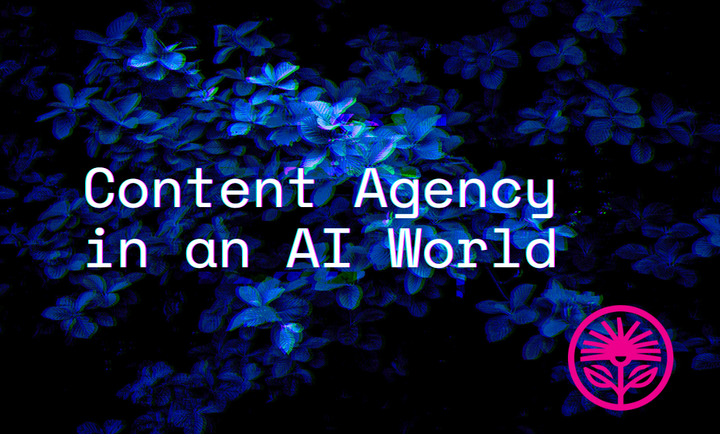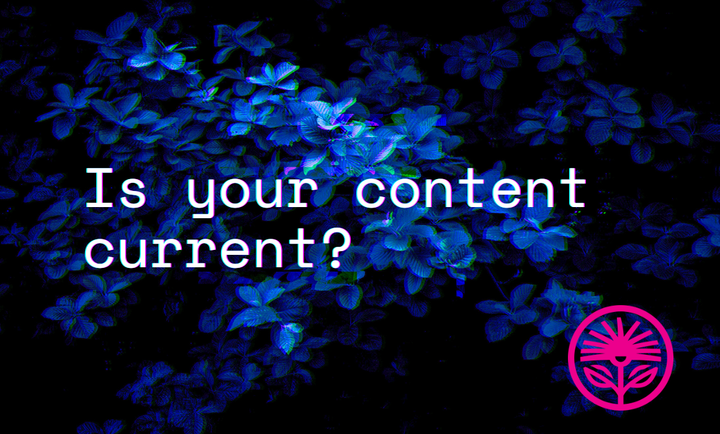An Invitation to Change — Kelford Labs Weekly
Being more than adaptable.


Is being adaptable enough?
That’s the question I’ve been wrestling with lately. We all know that, as marketers and entrepreneurs, we’ve got to be flexible. Adaptable. Able to embrace change and make the best of it.
But, recently, I’ve been feeling more and more like that’s not enough.
No, to fully embrace change, we need to invite it.
Change is Here
“A caterpillar gazing at the butterfly is supposed to have remarked, ‘You’ll never catch me in one of those durn things.’”
— Marshall McLuhan, Understanding Media
I’m not telling you anything you don’t already know when I say change is inevitable. But that doesn’t mean it can’t catch us by surprise.
I mean, after the Wright Brothers’ first visit to Kitty Hawk—where their Flyer would eventually take off—Wilbur Wright declared that it would be 1,000 years before humans took to the skies. Even he wasn’t ready for the change about to take place.
Which means, the truth is, “no matter how good you are,” Dorie Clark writes in The Long Game, “you can’t win any game by doing the same thing all the time.”
Because change is coming for us, no matter what it is we do, no matter what it is we want.
Maybe it’s AI transforming industries, as it might, or might not. Maybe it’s interest rates or inflation affecting buyer behaviour. Maybe it’s customers migrating to platforms or channels we’re not on, like TikTok or something newer.
The only thing we know for certain is that nothing stays the same.
Change is Constant
We know what to do about change: we adapt.
Like Al Ries and Jack Trout wrote in The 22 Immutable Laws of Marketing, “One way to cope with an unpredictable world is to build an enormous amount of flexibility into your organization.” Which means, “as change comes sweeping through your category, you have to be willing to change and change quickly if you are to survive in the long term.”
What can’t bend will break, as they say, and that applies to our business model and our marketing strategy.
And that’s a paradox we’ve got to contend with: Short-term business results reward consistency, extracting as much value out of our current context as we can.
But, “the better adapted you are,” Gerald Weinberg wrote in The Secrets of Consulting, “the less adaptable you tend to be.”
Long-term sustainability rewards adaptation, the ability to change ourselves to fit a changing context. Not sudden, herky-jerky shifts, but constant, smooth adjustment.
Which means we need to build adaptation into our plans. We need to have branching paths toward our goals, not rigid routines that can’t bend.
In a context like this, it’s vital to see change as inevitable and good, not surprising and bad. When we look at it that way, we’re more ready, able, and eager to create backup plans, and keep ourselves flexible and ready to take in new information.
“In other words,” Dr. Dan Dworkis writes in The Emergency Mind, “we need to view the move from Plan A to Plan B not as a failure, but as an opportunity to succeed using an alternate approach.”
Change is Good
When we see change as an opportunity to succeed using a different approach, we realize it’s not just inevitable—it’s actually good.
In The End of Competitive Advantage, Rita McGrath says, “My research suggests that rather than stability being the normal state of things and change being the abnormal thing, it is actually the other way around. Stability, not change, is the state that is most dangerous in highly dynamic competitive environments.”
Highly dynamic environments reward active, regular, persistent change, not stasis. And isn’t that the type of environment we all operate in?
Okay, it’s possible your industry has stayed the same for years, but mine sure hasn’t. And I suspect most readers feel the same way.
When I started my career in marketing and advertising, I sent ad proofs to clients via fax machine. You can practically hear the dust fall off of me.
But that’s funny, and not scary, because I saw all the changes in between as a challenge, not a threat.
Years from now, the way I do my work today will seem just as old, just as archaic, just as unrecognizable. The key, according to Smith and Lewis in Both/And Thinking is “to start on the next curve while still in the successful upward trajectory of the first curve.”
Instead of waiting for the inevitable change to become obvious, we need to search for and seek it out while things still seem relatively stable.
Change is All Around
But where do we go looking for changes to make?
Well, let’s start with our process:
Are we currently promoting our products or services on the channels we know our best customers to be? Or are we waiting for them to come back to the channels we’re still using?
Are we currently offering our services in the most convenient, easy-to-purchase manner our customers are beginning to expect? Or are we hoping they’ll stop expecting it?
Is our process taking advantage of modern tools and techniques to help us overdeliver in the areas where only we have expertise? Or are we sticking to old methods that don’t differentiate us, they only age us?
Peter Drucker had it right when he wrote that, “innovation and change make inordinate time demands on the executive. All one can think and do in a short time is to think what one already knows and to do as one has always done.”
It takes time to identify where we can change, but, if you’re anything like me, there have been signals you might have been avoiding.
If we find ourselves complaining about the diminishing effectiveness of our marketing, that’s a sign something’s already changed and we need to change, too.
If we notice increasing pricing pressure or sensitivity in the market, something has changed and we need to find a way to adapt.
Or if we’ve found that our methods are no longer as fast as the market expects them to be, that doesn’t necessarily mean they’ve become too impatient—it might mean we’ve become too stuck in our ways.
There are opportunities to change, adjust, adapt—and improve—all around us. We just have to look for them.
Change is Enough
Of course, change for its own sake isn’t the goal, either. The idea is to improve, not just do things differently than we did before.
Changing our target customer, absent of evidence for doing so, leads to confusion and a lack of credibility.
Changing our marketing language willy nilly without evidence we’re making it better is just a recipe for ineffectiveness.
Changing our offering by constantly adding to it just adds extra costs and dilutes the impact of our marketing by saying too much at one time.
Change is good when it adjusts our path—but it gets dangerous when we’re constantly changing our destination. When we have a coherent strategy for what we want, how we can efficiently get it, and the structure we’ll need to keep at it, we can change without becoming confused, or confusing.
That requires knowing who our ideal customers are, what they value most of all, and how we’re uniquely suited to provide it to them. Those elements rarely change—and they may never.
But how we provide that value and demonstrate it to them at a distance—that’s always changing, always improving, always focusing in even further.
Change is Personal
As entrepreneurs, when we change a part of our business, we change a bit of ourselves. We’re choosing to do things differently, which means we’re choosing to leave behind past decisions, past actions, and past results. In pursuit of something new.
And that’s tough. It might be one of the toughest things about entrepreneurship: We want to believe that everything we do is worth it, and that we haven’t wasted our time. And changing can feel like we’re admitting we made a mistake before.
“When it comes to quitting,” Annie Duke wrote in Quit, “the most painful thing to quit is who you are.”
But staying on a path that’s leading us in circles, or away from our goal, isn’t virtuous just because it’s consistent.
We get where we want to go by changing—not by getting stuck behind the first obstacle we encounter.
Sometimes, that obstacle is us, and our commitment to old goals, old dreams, and old plans that no longer apply.
But when we see change as more than inevitable—really, actually good—we give ourselves more opportunities to grow and improve.
So, let’s ask ourselves:
What am I sticking with because I don’t want to change?
What opportunity am I walking away from because I want to stay on this path?
And what can I do today to make change a part of my regular process?
As I like to say, industries very rarely die, but procedures do all the time. The trick is to not grieve our procedure—the specific way we used to do things—but to embrace, celebrate, and reinvigorate the model behind it.
By inviting change.
Kelford Inc. helps hands-on entrepreneurs and founders with complex marketing challenges define and articulate their unique value to their very best customers.
We’ll show you the way to always knowing what to say.



